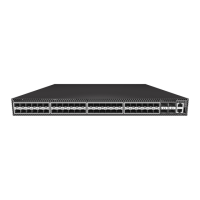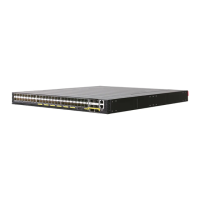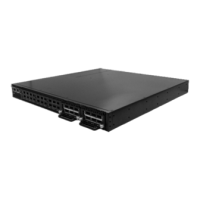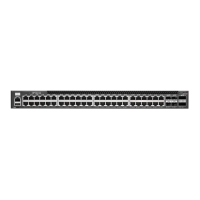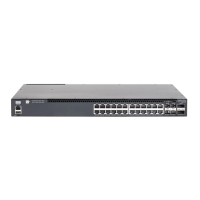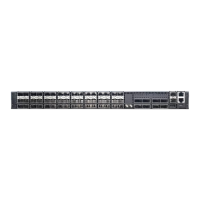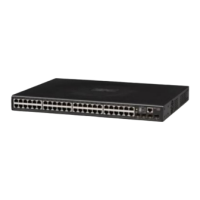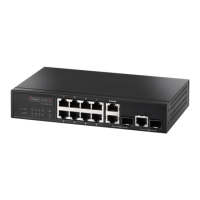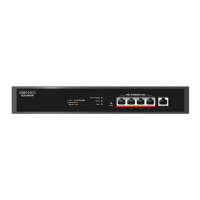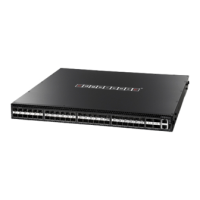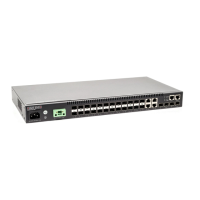Chapter 29
| IP Routing Commands
Border Gateway Protocol (BGPv4)
– 912 –
5. Choose the path with the lowest ORIGIN (IGP < EGP < Incomplete). If the value
of this criteria is the same for more than one candidate, go to the next step.
6. Choose the path with the lowest MED. By default, the MED attribute is
considered only when a prefix is received from neighbors in the same AS. If the
value of this criteria is the same for more than one candidate, go to the next
step.
7. Choose an eBGP path over an outer confederation, and an outer confederation
over an iBGP path. If the value of this criteria is the same for more than one
candidate, go to the next step.
8. Choose the path with the lowest IGP metric to the next hop. If the value of this
criteria is the same for more than one candidate, go to the next step.
9. Choose the path originated by the BGP router with the lowest router ID.
Message Types
Four message types are used by BGP. The OPEN message is used by BGP peers to
identify their capabilities, the UPDATE message is used to advertise/withdraw
prefixes, the NOTIFICATION message is used to send errors or close the session, and
the KEEPALIVE messages is used to keep the BGP session up. These message types
are described below.
◆ OPEN – BGP routers normally wait for BGP connections on TCP port 179. A
router that wants to establish an association will first open a TCP connection
leading to that port on the peer router. Once the connection has been set, each
side sends an OPEN message to negotiate the association’s parameters based
on the capabilities advertised in these messages. Open messages include
information about the BGP version number in use, the peer’s AS number, the
hold time, the BGP identifier (i.e., loopback address or the highest value of all
the BGP speaker’s interfaces), and optional parameter length.
◆ UPDATE – These messages are used to announce or withdraw IP prefixes, and
include the following components: withdrawn route length, withdrawn routes,
total path attributes length, path attributes, and network layer reachability
information.
◆ NOTIFICATION – These messages are used to indicate error conditions. The
underlying TCP session is closed after a notification message is sent.
◆ KEEPALIVE – These messages are sent at a set interval and are used to verify that
the BGP session is active. The hold timer is reset upon receipt of a KEEPALIVE or
UPDATE message. If the hold time is set to zero by both peers, a BGP session can
be kept open without generating KEEPALIVE messages.

